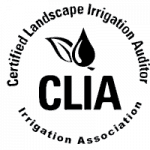Drip irrigation systems are becoming increasingly popular because they save water and energy compared to other methods. But how much do you really know about them?
The drip system consists of a network of pipes connected to emitters that release water at regular intervals. This method allows farmers to control the amount of water applied to their crops.
This article provides a detailed overview of the basics of drip irrigation systems. It explains how these systems operate, how they compare to other watering techniques, and why they are becoming increasingly popular.
What is Drip Irrigation?
The basic principle behind drip irrigation is simple. Water flows from an emitter through a pipe into a series of holes or slots in the soil. These holes allow water to penetrate the root zone of plants. As long as there is enough pressure in the line, water will continue to flow out of the emitter.
Water is released at regular intervals so it can be evenly distributed over the area being watered. This means that each plant receives the same amount of water throughout its growth cycle, which reduces the risk of disease.
How Does It Work?
A drip irrigation system is made up of three main components:
Emitter – A device that releases water. Emitters come in various shapes and sizes. They may be attached to a hose, buried underground, or placed on top of the ground.
Pipe – A flexible tube that carries water from the emitter to the roots of your plants. Pipes are usually made of plastic or metal.
Soil – An absorbent material that holds water and helps distribute it to your plants. Soil should be porous, but not too wet, for best results.
In most cases, the emitter is connected to a valve that controls the flow of water. When the valve opens, water begins flowing out of the emitter, which creates a steady stream.
When the valve closes, no more water comes out of the emitter until the next time it opens.
Why Use Drip Irrigation Systems?
There are many reasons why farmers choose to use drip irrigation systems. Here are some of the benefits:
1. Save Money
Compared to overhead sprinklers or flood irrigation, drip irrigation saves money by reducing the amount of water used. Farmers can also reduce costs by using less fertilizer and pesticides.
2. Reduce Waste
Because drip irrigation uses less water than other methods, it minimizes waste. In addition, it prevents runoff, which causes pollution problems.
3. Increase Productivity
Drip irrigation improves crop yields by allowing farmers to apply water exactly where it’s needed. This makes it easier to avoid overwatering or underwatering, which can cause diseases and stress.
4. Improve Quality
By applying water only when necessary, drip irrigation increases nutrient uptake and encourages healthy plant growth.
5. Protect Against Disease
Diseases spread quickly when water is sprayed onto leaves. By limiting the amount of water that gets to the leaves, drip irrigation slows down the rate at which pathogens develop.
6. Help Keep Crops Healthy
Drip irrigation helps prevent pests and weeds because it keeps them away from the roots. This limits damage caused by insects and weeds.
7. Make Farming More Sustainable
By using drip irrigation, farmers can increase the yield of their crops while conserving resources like energy and water.
8. Create Beautiful Landscapes
Drip irrigation is often used in conjunction with other landscape features such as ponds, fountains, and streams.
9. Prevent Flooding
Flooding occurs when excess rainwater runs off fields and into nearby rivers and creeks. Using drip irrigation can help prevent this problem.
10. Improve Water Conservation
Drip irrigation reduces the amount of water lost through evaporation, which means you don’t have to worry about wasting precious water supplies.
Drip irrigation systems are an effective way to conserve water and protect soil quality. They allow farmers to improve productivity, create beautiful landscapes, and save money. For these reasons, they are becoming increasingly popular around the world.
Desert landscaping uses less water than other types of landscaping. Water-wise landscaping is an option for homeowners who want to save money by using less water. Experts at Water Wise Landscape can install drip irrigation systems or replace existing systems. Contact us today!






